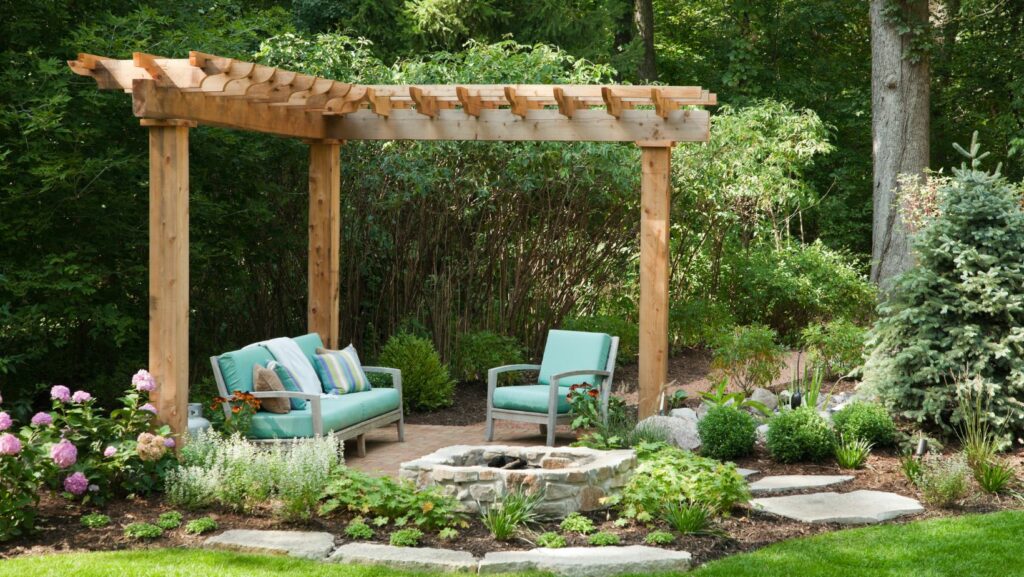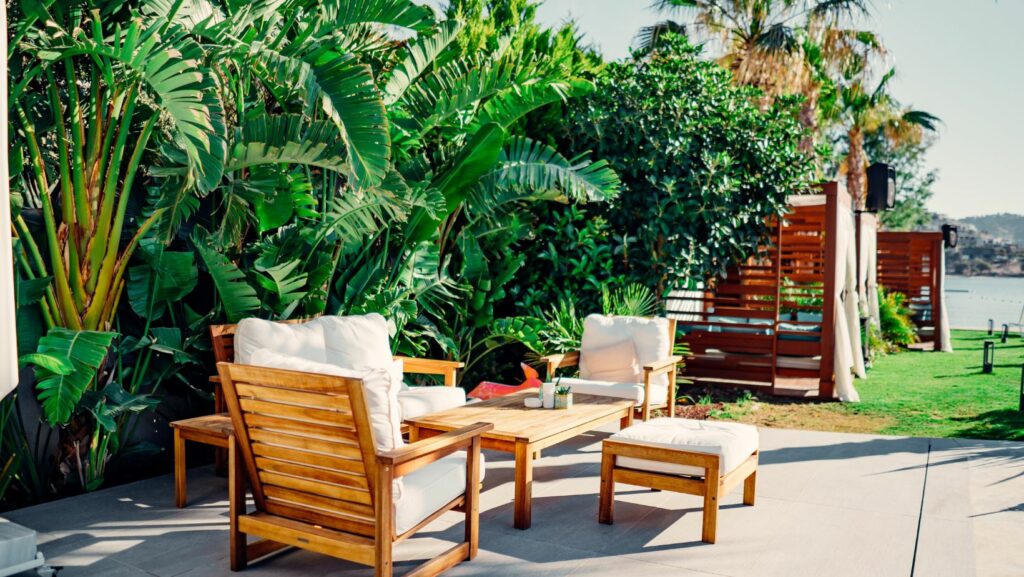When space is tight, every design decision matters. Whether you’re working with a small courtyard, balcony, or narrow side yard, the right layout can completely change how your outdoor area looks and feels. The good news? You don’t need a huge budget to make a small outdoor space feel functional and inviting. Something as simple as the placement of your seating or the use of cobblestone pavers for texture and contrast can trick the eye into thinking the area is larger than it is.
Creating a sense of spaciousness is all about perception. By using light, layout, and layered elements thoughtfully, you can bring a sense of calm and openness—even to a compact garden or patio. It’s not about cramming more into the space. It’s about making better use of what’s already there.
Here’s how to maximise your small outdoor space so it feels like a feature, not an afterthought.
Use a Light and Cohesive Colour Palette
Bright, neutral tones help reflect light and make any area feel open and airy. Try to stick with a simple colour scheme across furniture, pots, and materials. This doesn’t mean everything has to match exactly—just aim for harmony.
- Whites, light greys, and soft beiges are your best friends.
- Limit bold colours to accents like cushions or plant pots.
- Choose flooring or surface finishes that are natural and matte to reduce visual clutter.

Keeping things cohesive creates a calming effect and avoids the visual ‘noise’ that can make a small space feel busy or cramped.
Scale Down the Furniture, Not the Style
Big outdoor furniture in a small space will always look out of place. Instead, opt for pieces designed with smaller footprints but that don’t skimp on comfort.
- Foldable or stackable furniture works well for flexible use.
- Benches with hidden storage double your functionality.
- Consider built-in seating around the edge of your space to open up the centre.
Choose furniture that’s slightly raised off the ground. This exposes more floor space and creates a feeling of openness beneath the pieces.
Blur the Lines Between Indoors and Outdoors
One trick for making a small outdoor area feel larger is to create a visual connection to your indoor space. This makes the two feel like one extended area rather than two separate zones.
- Use similar flooring materials or colours between inside and outside.
- Large sliding doors or full-length windows help the eye travel.
- Mirrors or glass elements in your outdoor space can reflect the interior and double the visual impact.
Even a simple rug that flows from indoors to your outside area can help unify the space.
Use Vertical Space Wisely
If you can’t grow out, grow up. Walls, fences, and even ceilings can become practical and beautiful parts of your outdoor setup.
- Wall-mounted planters save ground space and add greenery at eye level.
- Trellises with climbing plants draw the eye upwards and soften hard surfaces.
- Vertical storage (hooks, shelves, or racks) keeps tools and accessories off the floor.
Creating visual height gives your space dimension and draws attention away from the size of the footprint.
Keep the Layout Open and Flowing
It’s tempting to fill every inch of a small space, but restraint goes a long way. Leave some empty space to allow for movement, light, and visual breathing room.
- Choose a few strong features instead of many small ones.
- Keep pathways clear and wide enough to move comfortably.
- Use low-profile furniture and avoid tall, bulky dividers.
A good rule of thumb: if something doesn’t add beauty or function, it probably doesn’t need to be there.
Use Texture and Layers to Add Interest
Just because a space is small doesn’t mean it should feel flat or boring. Mix up textures and materials to create visual interest and depth.
- Combine wood, stone, fabric, and greenery to break up surfaces.
- Add soft elements like outdoor cushions or a small rug.

- Use a variety of plant heights and shapes to create movement and rhythm.
Texture makes a space feel styled without needing excess décor.
Let Lighting Set the Mood (and Expand the Space)
The right lighting can make your outdoor area feel bigger and more inviting, especially after dark.
- Use string lights or lanterns to draw the eye outward.
- Add solar stake lights along paths or garden beds for a subtle glow.
- Consider wall sconces or uplights to highlight architectural or plant features.
Good lighting doesn’t just make a space usable at night—it changes the entire atmosphere and makes things feel intentional and welcoming.
Add a Focal Point to Ground the Space
Every space, no matter how small, benefits from a focal point. It gives the area a sense of purpose and keeps the eye from wandering.
- A feature pot, water bowl, or small firepit can do the trick.
- A painted wall or statement plant also works well in tight spaces.
- If you’ve got room, a small table with two chairs becomes both focal and functional.
When done right, the focal point draws attention away from the overall size and toward what’s beautiful about the space.
Creating a small outdoor area that feels bigger is less about square metres and more about smart design. With the right balance of materials, colours, and layout, even the tiniest space can become your favourite part of the home. Let your creativity stretch further than your floorplan.

